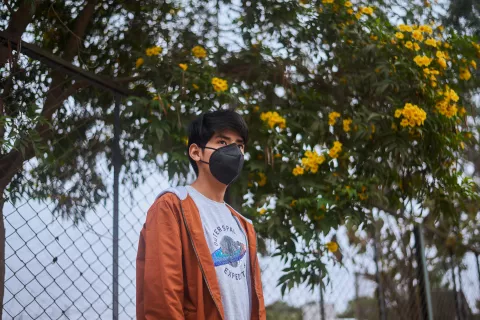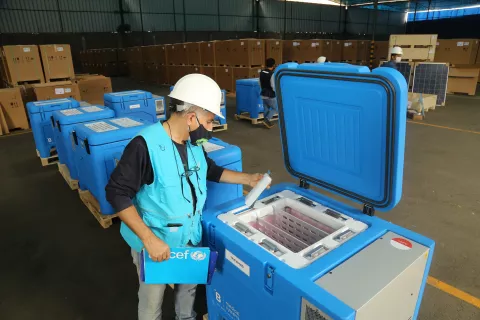Hope comes in small doses
COVID-19 vaccines, including doses procured through COVAX, are starting to reach the most vulnerable in Peru.

- Available in:
- Español
- English
“I´ve been reborn,” said Celinda Tafur, 87 years old, after receiving her first COVID-19 vaccine dose at the Los Libertadores vaccination site in Lima, Peru. Celinda hopes it will bring her closer to what she misses most: gathering the whole family around the table.
Artemio Baldoceda, 83 years old, misses his grandchildren, who he has seen through a phone screen since the pandemic started. “When I can hug my grandchildren tight, that moment is going to be glorious,” he said.
Reaching the most vulnerable
Older adults like Celinda and Artemio are among the first to get vaccinated, along with health workers like Carmen Castañeda, a nurse at the vaccination site and one of more than 1.7 million people in Peru who have been infected with COVID-19 [1].
“I’m no stranger to this pandemic..I have been sick and I have had family members who have been sick. Now that I’m vaccinated, I feel safer and more eager to work”.
-Carmen Castañeda
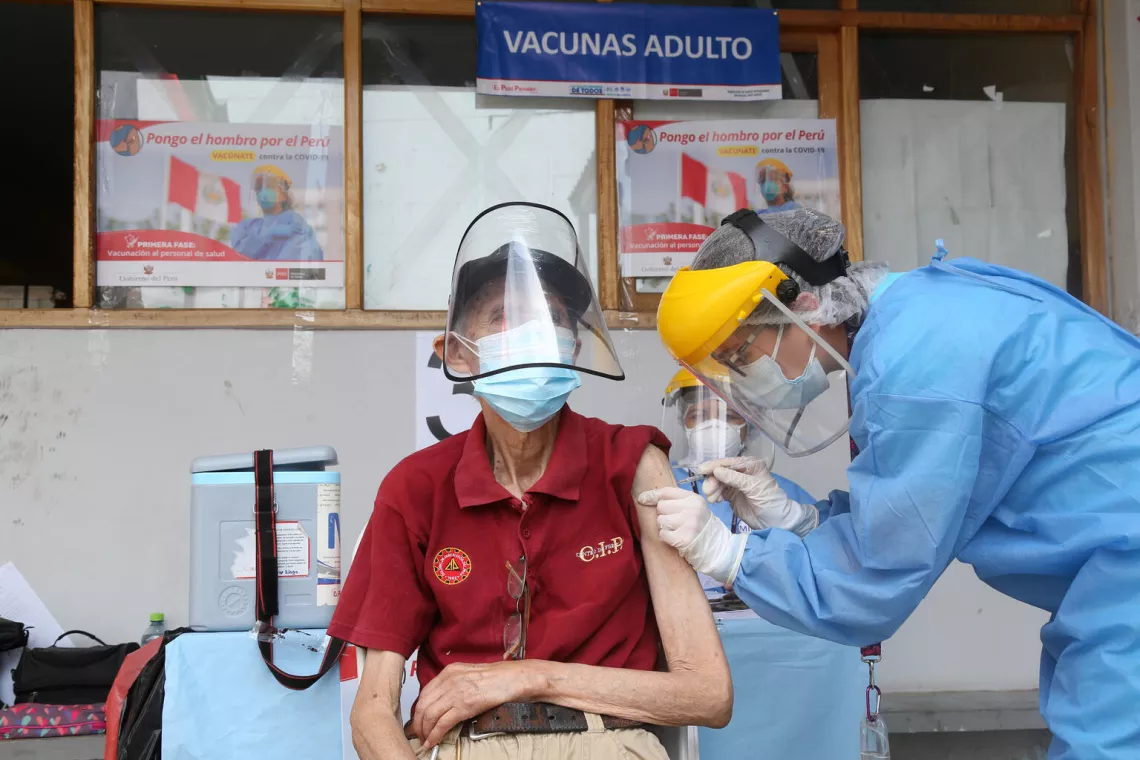
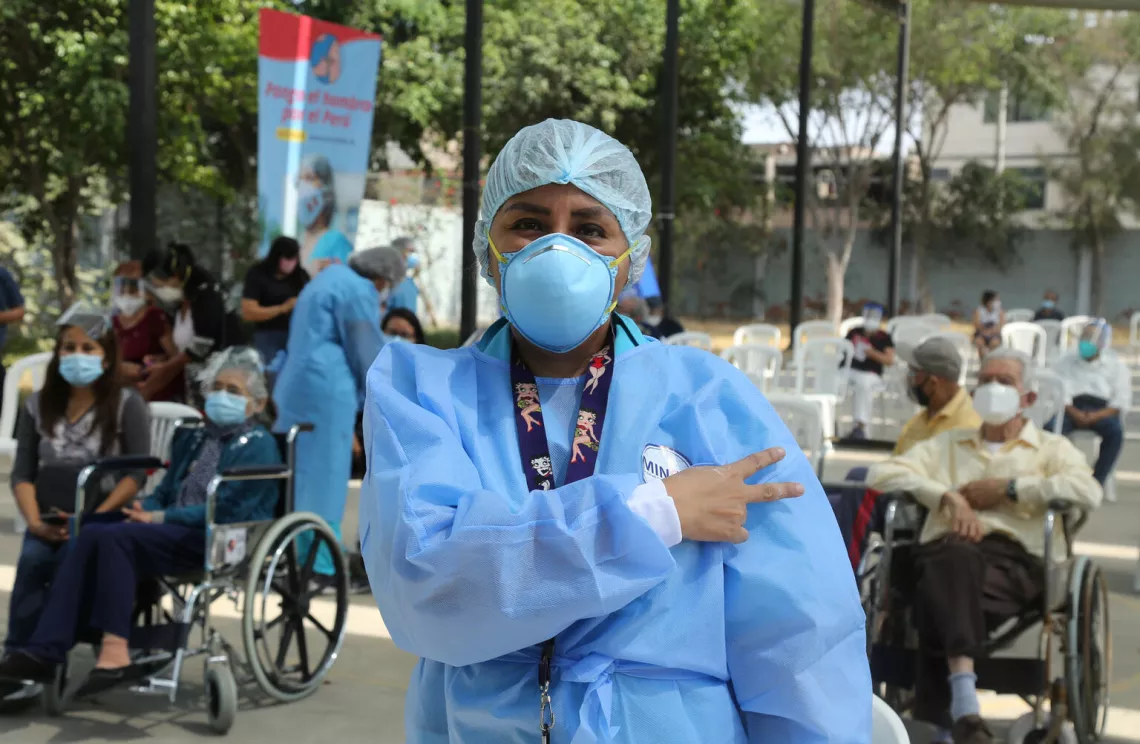
Peru’s vaccine rollout includes doses supplied through COVAX, the global initiative for equitable access to COVID-19 vaccines, co-led by the Coalition for Epidemic Preparedness Innovations (CEPI), Gavi, the Vaccine Alliance, and the World Health Organization (WHO), alongside UNICEF.
Vaccination rates at risk
As the Government of Peru works to procure and distribute vaccines across the country, just 57 per cent of the population say they would get a COVID-19 vaccine if given the chance [2]. Carlos Garzón, PAHO/WHO Representative in Peru, explained: “The vaccines are new and we must help people understand that they are safe and effective, that not everyone can get vaccinated at once and in the meantime, people must keep taking precautions.”
Along with building trust in the new vaccines, Peru faces the challenge of restoring access to routine immunizations. With primary care services interrupted during the pandemic, immunization rates among children under 12 months in Peru dropped from 76.7 per cent in 2019 to 61.1 per cent in 2020 [3]. “As we move forward with COVID-19 vaccination, we must also ensure that children, especially the most vulnerable, don’t fall behind on lifesaving routine immunizations,” said Ana de Mendoza, UNICEF Representative in Peru.
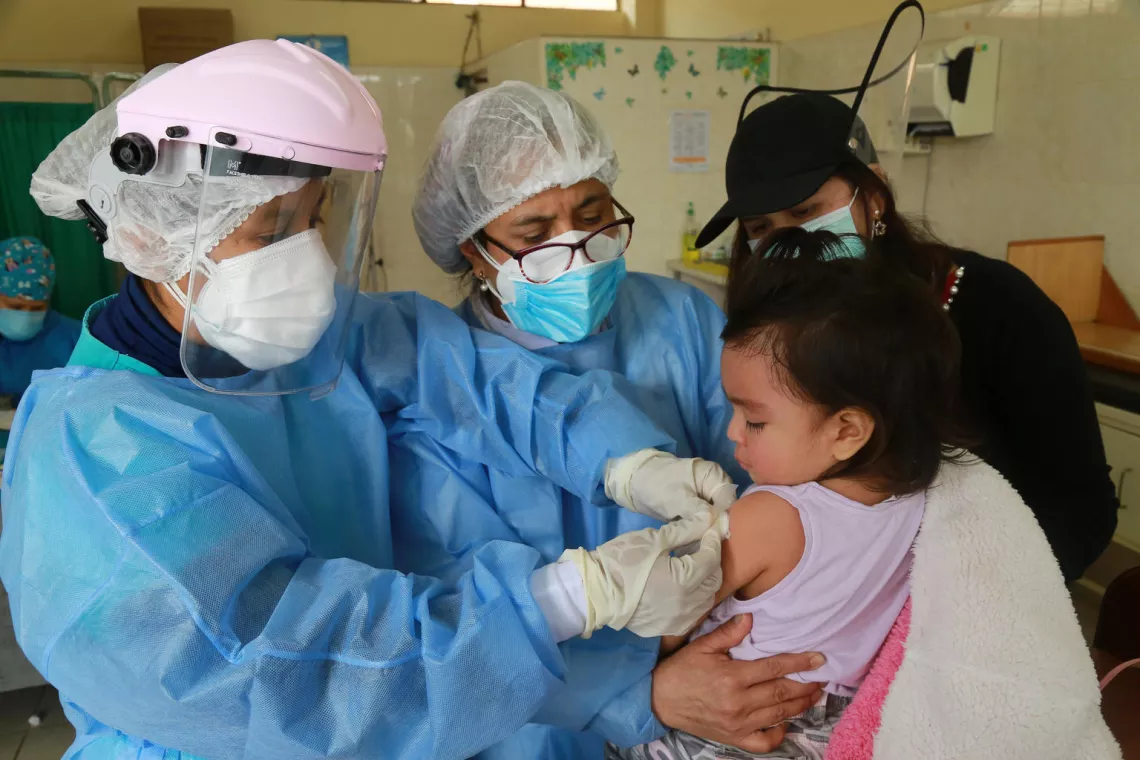
Nothing to fear
Whether young or old, Celinda and Artemio encourage everyone to get the vaccines they need, as soon as they are available. “The vaccine gives me a little more life to be with my family and for my family to be with me,” Artemio said, while Celinda reassured, “Everybody should get vaccinated. There’s no need to be afraid.”
[1] Peru Ministry of Health, ‘Sala Situacional COVID-19 Perú’, 20 April 2021, <https://covid19.minsa.gob.pe/sala_situacional.asp>, accessed 21 April 2021.
[2] ‘El Comercio-Ipsos Survey: un 57% sostiene que sí se vacunaría contra el coronavirus’, El Comercio, 4 April 2021, <https://elcomercio.pe/lima/sucesos/encuesta-ipsos-el-comercio-un-57-sostiene-que-si-se-vacunaria-contra-el-covid-19-sinopharm-pfizer-noticia/>, accessed 21 April 2021.
[3] Peru National Institute of Statistics and Informatics, Peru: Demographic and Family Health Survey 2020, INEI, Lima, Peru, 2021.


